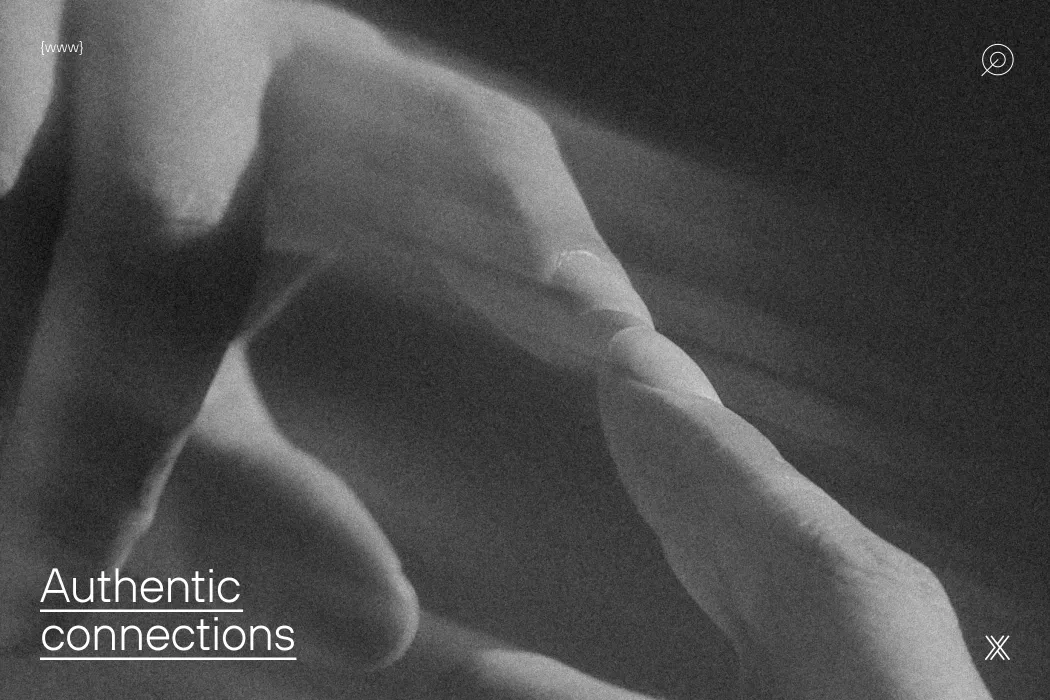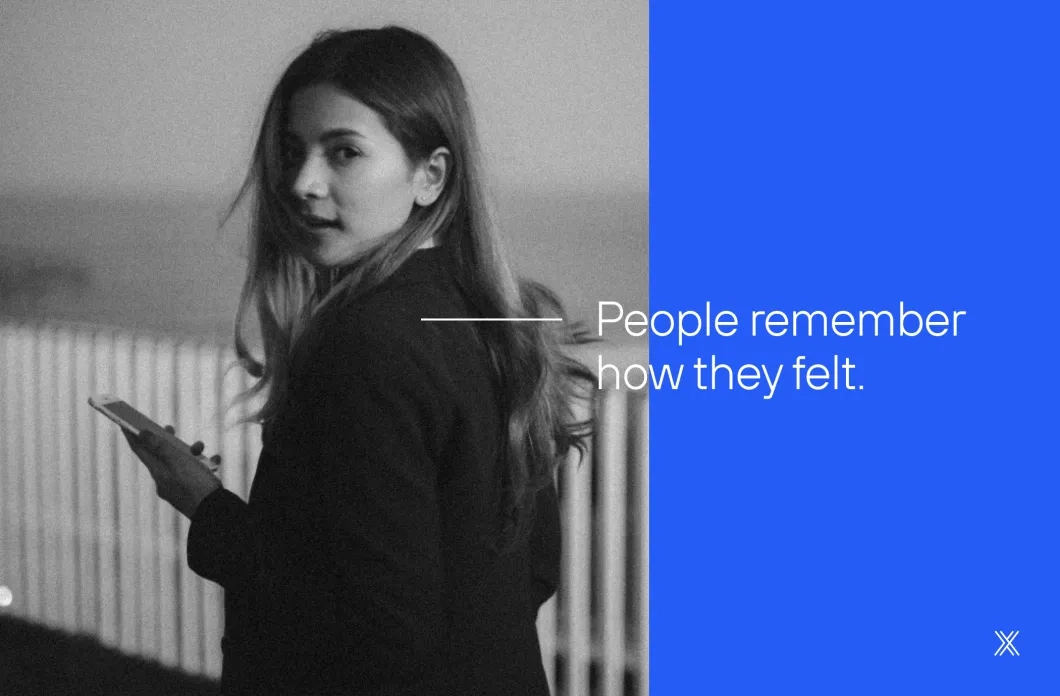
Creating meaningful digital experiences is a daily challenge, especially in today’s context where users are increasingly aware and in search of exclusivity. In a people-centered market, it’s important to understand that the success of a product or service doesn’t rely solely on functionality or visual appeal. What truly makes the difference is the experience it delivers.
But not just any experience, we’re talking about one that’s intentionally built, with strategic depth and a focus on what matters: the human being. That’s where Experience Design comes in, a strategic field that goes beyond the interface and digital journey, connecting emotions, needs, and perceptions at every touchpoint with the brand.
What is Experience Design, anyway? How does it differ from (or integrate with) User Experience (UX)? In this article, we’ll explore this approach that’s redefining how companies build value and loyalty, plus real-life examples of brands using experience design as a competitive edge.
Experience Design
Experience Design is a holistic approach focused on planning and creating meaningful experiences at every point of interaction between a person and a brand, product, or service.
It’s not just about designing intuitive interfaces. It brings together empathy, design, and technology with a broader focus: understanding human motivations, anticipating behaviors, identifying friction points, and creating memorable, consistent, and impactful experiences, whether in a digital, physical, or hybrid environment.
In practice, Experience Design draws from disciplines such as psychology, design thinking, anthropology, technology, and business strategy. It considers all layers of experience: from the initial discovery of a brand to post-sale, including support, service, and a sense of belonging. This includes:
- Diagnosing usage and consumption contexts of products/services.
- Understanding the motivations behind behaviors.
- Designing fluid, personalized, and consistent multichannel interactions.
- Removing friction and enhancing delightful moments
I want to apply Experience Design in my business
UX and Experience Design: layers of the same structure
It’s common to confuse the two terms, as UX (User Experience) is a fundamental, tactical part of Experience Design.
While UX is directly related to the user’s experience with a digital interface or product (apps, websites, systems), Experience Design takes into account the entire journey through and beyond the interface. It encompasses the perception chain, from human service to packaging, from brand narrative to service delivery.
One analogy to understand the difference between UX and Experience Design is to think of a play:
UX is the script and stage; it involves the elements that ensure a clear and well-executed performance: an intuitive website, fast loading, efficient information architecture, and a frictionless purchasing process.
Experience Design is the full audience experience, starting long before the curtain rises and continuing after the show ends. It includes the warm reception at the door, ambiance, interaction with the cast, and the memories carried after the event. In digital terms: surprising packaging, humanized post-sales service, and relevant content that continues the conversation and strengthens the brand relationship.
In short, UX is one of the pillars of Experience Design, which is cross-functional, strategic, and deep. Ignoring these nuances can lead companies to solve only momentary friction points without addressing the experience systemically.
Deepen your knowledge: Personalized Experience to foster loyalty

The importance of Experience Design for business
Consumer behavior has changed, evolving into something more complex, fragmented, and conscious. In this new paradigm, the formula for generating value also changes. The premise is simple but transformative: experience is no longer the result of delivery; it becomes the delivery itself. Companies that still treat experience as a peripheral aspect risk becoming irrelevant and obsolete.
Today’s consumers are hyper-connected, highly informed, and extremely attentive to the coherence between what a brand says and does. They buy what they believe in and what they feel. Here’s where Experience Design proves its power to forge emotional bonds, build trust, and position brands as value leaders, even in saturated markets.
Companies that center their business on experience:
- Reduce friction and uncertainty in critical journeys.
- Anticipate latent expectations, often unspoken.
- Transform operational interactions into moments of enchantment and emotional connection.
Also read: How to Create a Strategic and Scalable Corporate Website
Results emerge in a virtuous cycle, where experience generates tangible, measurable value:
- Lower churn and higher lifetime value, with customers staying by choice, not inertia.
- Improved NPS (Net Promoter Score), organically boosting brand reputation.
- More qualified conversions, with less friction and better alignment between intent and action.
- Increased share of wallet, since well-served customers tend to buy more and explore new services from the same brand
Experience Design is an investment with exponential return.
I want to guarantee the best experience for my user
Delivering meaning to the user
The purpose of Experience Design is to attribute meaning to interactions between people and brands. Respecting time, desires, and human emotions is essential to ensure flow and naturalness. With the right, targeted language, the user avoids effort; there’s no need to decipher paths or think about what to do.
Beyond efficiency and enchantment, Experience Design acts as a tool for symbolic construction. When done right, it creates a sense of belonging and identification. The user sees themselves reflected in the brand’s language, values, and attitude. They realize the company understands and respects their identity.
These are the kinds of experiences that awaken positive emotions and lasting memories. By evoking feeling, the brand engraves itself in the user's memory more deeply than any isolated advertising campaign ever could.
This is only possible with strategic intentionality. Memorable experiences result from real empathy, intense research, repeated testing, and continuous active listening. Behind every intuitive interface, harmonious touchpoint, or emotionally relevant journey is a sophisticated process that brings together design, technology, and humanity.
In conclusion, delivering meaning is the new frontier of design innovation, as it builds loyalty, differentiation, and sustains brands in the long term.
Competitive advantage
While many companies still see user experience as a visual detail or operational luxury, visionary brands treat it as a non-negotiable strategic asset. These organizations make Experience Design intrinsic to their business model, a foundation of relevance, preference, and longevity in an increasingly commoditized market.
When applied with intentionality and a systemic view, Experience Design becomes a hard-to-replicate competitive advantage, deeply rooted in culture, processes, and how the brand relates to people. This advantage is reflected in several aspects:
- Increased switching cost: An exceptional experience creates an emotional loss if the customer switches brands.
- Lower acquisition cost: Delighted customers become promoters, reducing the need for paid media and expanding authentic reach.
- Greater perceived value: Even simple solutions are seen as premium when delivered with well-designed, coherent, and user-sensitive experiences.
- Stand out in saturated markets: When competitors offer similar products at similar prices, the winner is the one delivering the best experience.
Brands that make Experience Design a growth strategy
Here are some standout companies where Experience Design is part of the culture:
1. Airbnb
Airbnb doesn’t just sell accommodation. It sells experiences. From platform design to in-home details and customer support, everything is crafted to evoke belonging and discovery.
Impact: Loyalty, global reputation, and the ability to scale while maintaining brand essence.
2. Apple
A global benchmark, Apple designs experiences from retail stores to that first iPhone activation. Packaging, system gestures, tech support, everything communicates consistency, innovation, and premium value.
3. Nubank
In a traditionally cold and impersonal financial sector, Nubank bet on humanization. Personalized service, simple interface, clear and empathetic communication.
Result: An army of brand advocates, social media engagement, and leadership in the digital space.
4. Disney World
Perhaps no better example of physical-world Experience Design exists. At Disney World, every detail immerses visitors in an enchanting, unforgettable universe.
The experience is so consistent and engaging that it becomes an emotional memory, transforming guests into lifelong fans. Disney delivers joy and dreams as carefully choreographed magic.
How to apply Experience Design in practice?
Integrating Experience Design into your business strategy requires method, active listening, and a systemic mindset. Here are the key steps:
- Map the customer journey: Understand every touchpoint, identify gaps and opportunities.
- Work with multidisciplinary teams: Design, marketing, support, product, and tech must collaborate.
- Put people at the center: Use qualitative research, interviews, and real-user testing.
- Design consistent experiences: Every detail communicates, from buttons to post-sale.
- Measure impact: Go beyond clicks, analyze satisfaction, NPS, engagement, and conversion.
What does the future hold?
Ultimately, it becomes clear that Experience Design is not a trend; it’s a necessity. Businesses that center on experience grow sustainably. It’s about building real connections, promoting flow, sparking delight, and creating legacy-driven brands that remain relevant over time.
If you want to transform how people relate to your brand, product, or service, your first step might be rethinking how you design those experiences.
At Dexa, Experience Design is part of our DNA.
We work side by side with our clients to craft complete, consistent, and people-centered experiences.
